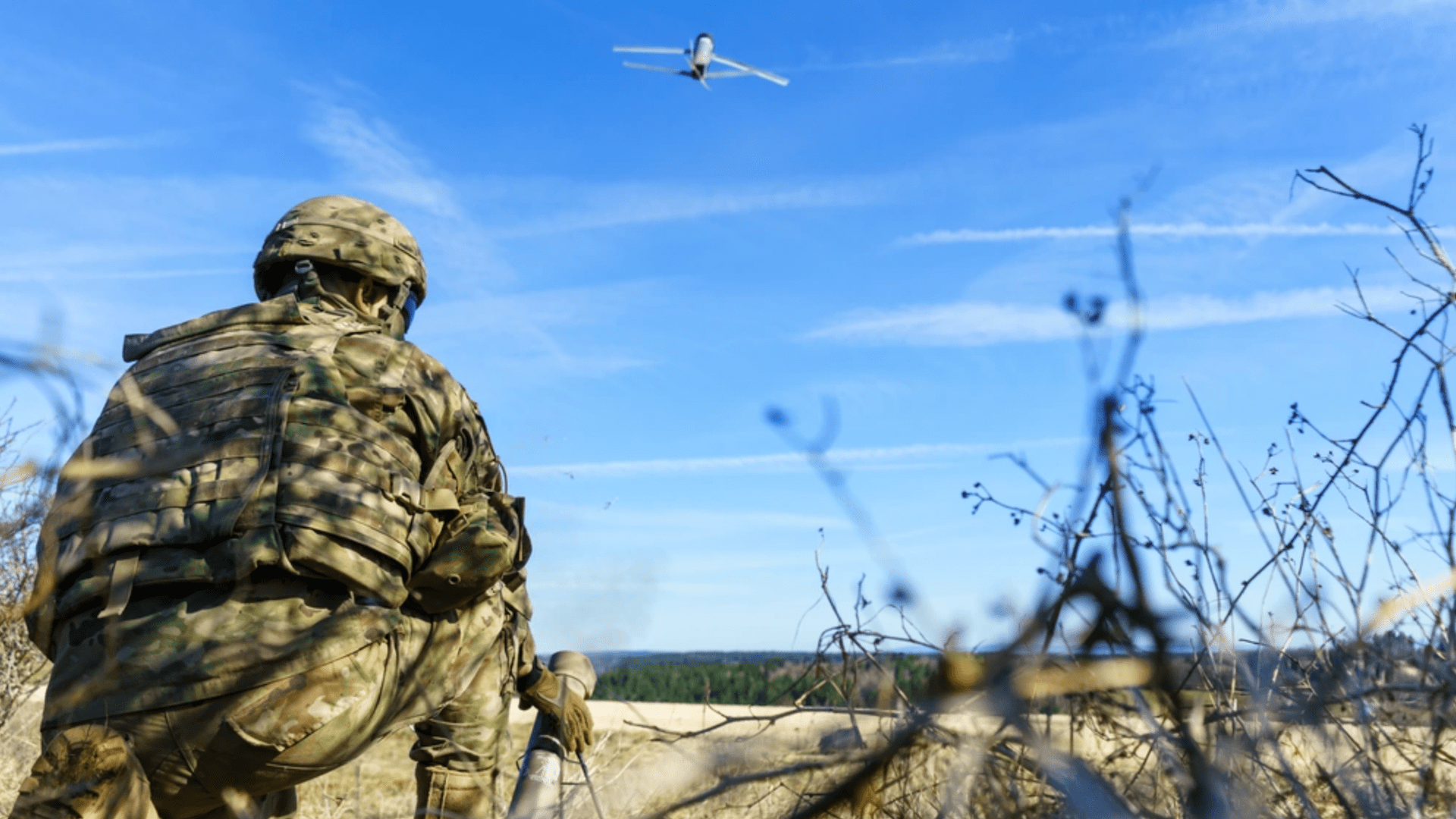

With loitering munitions now a fixture of both sides of the Russian invasion of Ukraine to take out tanks, heavy armor, and watercraft, the U.S. Army is considering options for suicide drones ahead of its next big war.
A request for information for loitering munitions — precision-guided bombs that idle above a battlefield before dive-bombing their targets below — published by Army Contracting Command on Monday states that the service is conducting market research “to identify parties having an interest in and the resources to support the requirement for research in employing lethal and non-lethal effects delivery capabilities from unmanned aerial systems.“
The RFI — which does not constitute a request for proposals but more of a survey of the U.S. defense industrial base — was published on behalf of Army Futures Command’s Army Applications Laboratory, which pursues next-generation weapons and equipment for soldiers “to deploy, fight and win future conflicts,” according to its website.
Subscribe to Task & Purpose Today. Get the latest military news, entertainment, and gear in your inbox daily.
The Army has maintained loitering munitions in its arsenal for at least the last decade. The service awarded AeroVironment a multimillion-dollar contract for “rapid fielding” of the now-popular Switchblade loitering munition to troops in Afghanistan back in 2011. More recently, the service picked up Raytheon’s expendable Coyote system as a suicide drone, and a 2021 exercise saw the employment of the secretive new Joint Man-in-the-Loop Loitering Munitions, as documented by our colleagues at The War Zone.
But according to Army Futures Command, the newfound pursuit of fresh loitering munitions was directly inspired by the successful tactical deployment of suicide drones in Ukraine — like, say, the U.S.-supplied Switchblade and rapidly-developed ‘Phoenix Ghost’ — to knock out Russian armor.
The conflict in Ukraine “has clearly demonstrated the ability of unmanned systems at increasingly lower echelons of employment to be highly effective in different roles from intelligence gathering, reconnaissance, and strike actions by both partners and potential near-peer adversaries,” according to the RFI.

In the long term, the service wants to field suicide drones to soldiers from the Brigade Combat Team down to the squad level, with a “mixture of capabilities” that are adaptable to various formations from mounted Stryker or mechanized units to special operations or light reconnaissance forces, according to the RFI.
As for the munitions themselves, the RFI indicated that the Army is casting a relatively wide net, searching primarily for unmanned aerial vehicles with a minimum 500 gram, or 1 pound, payload capacity, UAVs with a built-in payload drop capability, or “classic loitering munitions with organic kinetic capability,” meaning that the explosive payload and delivery vehicle are one and the same.
“The Army is interested in exploring a spectrum of kinetic delivery options to include unmanned aerial systems with built-in kinetic capability or those UAS that can be retrofitted with munition carry/release capabilities,” the RFI continues. “The Army is analyzing the loitering munitions (LM) market and adjacent markets to identify readily available options for the purposes of rapid unit-level experimentation in an operational environment.”
Notably, the desired loitering munition solution will not be fully autonomous, keeping a human operator in the loop when deploying lethal effects, according to the RFI.
The Army isn’t the only service on the hunt for a new line of suicide drones to back up infantry forces on future battlefields. The Marine Corps has been pursuing loitering munitions in various mounted and dismounted configurations for years, including the Switchblade drone the Army pioneered a decade ago. Indeed, the service recently awarded contracts to Israeli firm UVision and Virginia-base Mistral to slap a multi-round suicide drone launcher onto the service’s Light Armored Vehicle, Joint Light Tactical Vehicle, and Long-Range Unmanned Surface Vessel platforms.
And it’s unlikely that these new loitering munitions will remain in Army hands for long: according to the RFI, the service plans on fielding the new systems not just to U.S. military personnel but unspecific partner forces as well. Those partner forces, in the near term, likely include the Ukrainian military, which has already received Switchblade and Phoenix Ghost tactical suicide drones from the U.S. since the start of the Russian invasion in February.

The proliferation of off-the-shelf loitering munitions among the U.S. military’s adversaries have been a major concern for years, with then-U.S. Central Command chief Marine Gen. Kenneth McKenzie Jr. declaring back in 2021 that explosive-laden suicide drones had become the biggest threat to U.S. troops in the Middle East since the rise of the improvised explosive device (IED) during the U.S.-led campaigns in Iraq and Afghanistan.
While loitering munitions have been successfully employed by non-state actors in regions like Afghanistan, Iraq, Syria, Yemen, and even Mexico for years, man-portable suicide drones didn’t garner significant notoriety until the 2020-Nagorno-Karabakh War, which saw Azerbaijani forces knock out Armenian air defenses and armored vehicles with Israeli-made Harop drones in a first for a conventional conflict, as Army Maj. Brennen Deveraux observed for War at the Rocks.
“Since the war, numerous nations have sought to increase and modernize their internal loitering munition arsenal,” Deveraux wrote “The ongoing conflict [in Ukraine] serves as a testbed for this emerging capability and will illuminate potential changes to the changing character of 21st-century warfare.”
The latest on Task & Purpose
- Minnesota Vikings thanked porn star Johnny Sins for his service
- The Air Force’s admin software is so bad that the top enlisted airman is trolling it
- US Navy fined for acts of software piracy
- All-mom flight of Air Force F-15 fighter pilots takes to the skies
- Air Force stages show of force flyover after North Korea’s latest ICBM test
Want to write for Task & Purpose? Click here. Or check out the latest stories on our homepage.
